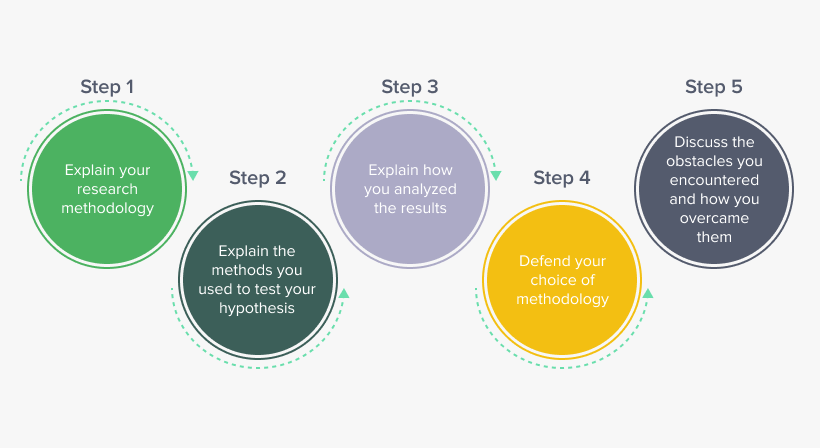How to structure the research methods chapter
Importance of methodology in research papers
When it comes to writing your study, the methodology in research papers or a dissertation plays a pivotal role. A well-crafted methodology section of a research paper or thesis not only enhances the credibility of your research but also provides a roadmap for others to replicate or build upon your work.
How to structure the research methods chapter
Wondering how to write the research methodology section? Follow these steps to create a strong methods chapter:

Step 1: Explain your research methodology
At the start of a research paper, you would have provided the background of your research and stated your hypothesis or research problem. In this section, you will elaborate on your research strategy.
Begin by restating your research question and proceed to explain what type of research you opted for to test it. Depending on your research, here are some questions you can consider:
a. Did you use qualitative or quantitative data to test the hypothesis?
b. Did you perform an experiment where you collected data or are you writing a dissertation that is descriptive/theoretical without data collection?
c. Did you use primary data that you collected or analyze secondary research data or existing data as part of your study?
These questions will help you establish the rationale for your study on a broader level, which you will follow by elaborating on the specific methods you used to collect and understand your data.
Step 2: Explain the methods you used to test your hypothesis
Now that you have told your reader what type of research you’ve undertaken for the dissertation, it’s time to dig into specifics. State what specific methods you used and explain the conditions and variables involved. Explain what the theoretical framework behind the method was, what samples you used for testing it, and what tools and materials you used to collect the data.
Step 3: Explain how you analyzed the results
Once you have explained the data collection process, explain how you analyzed and studied the data. Here, your focus is simply to explain the methods of analysis rather than the results of the study.
Here are some questions you can answer at this stage:
a. What tools or software did you use to analyze your results?
b. What parameters or variables did you consider while understanding and studying the data you’ve collected?
c. Was your analysis based on a theoretical framework?
Your mode of analysis will change depending on whether you used a quantitative or qualitative research methodology in your study. If you’re working within the hard sciences or physical sciences, you are likely to use a quantitative research methodology (relying on numbers and hard data). If you’re doing a qualitative study, in the social sciences or humanities, your analysis may rely on understanding language and socio-political contexts around your topic. This is why it’s important to establish what kind of study you’re undertaking at the onset.
Step 4: Defend your choice of methodology
Now that you have gone through your research process in detail, you’ll also have to make a case for it. Justify your choice of methodology and methods, explaining why it is the best choice for your research question. This is especially important if you have chosen an unconventional approach or you’ve simply chosen to study an existing research problem from a different perspective. Compare it with other methodologies, especially ones attempted by previous researchers, and discuss what contributions using your methodology makes.
Step 5: Discuss the obstacles you encountered and how you overcame them
No matter how thorough a methodology is, it doesn’t come without its hurdles. This is a natural part of scientific research that is important to document so that your peers and future researchers are aware of it. Writing in a research paper about this aspect of your research process also tells your evaluator that you have actively worked to overcome the pitfalls that came your way and you have refined the research process.
